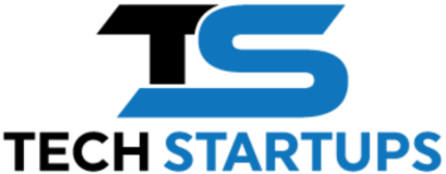Why Your Startup Might Need to Build Its Own Tech Stack

This guest article was written by Zander Cook, Co-Founder and CRO of Lease End, on why startups should consider building custom tech stacks—including AI-driven tools—rather than relying on off-the-shelf SaaS solutions.
Most off-the-shelf business tools are designed to solve general problems. That’s their job: appeal to the masses, serve as many industries as possible, and be “just customizable enough” to work for most companies.
But “most companies” isn’t your company.
And if you’re building something disruptive—especially at a tech startup—you’ll likely need to build more than just your product. Most startups assume they’ll need developers to build what they sell. What often gets overlooked is the power of building internal tools—your own go-to-market systems, sales stack, and operations platform. That’s the part that’s different.
At Lease End, we didn’t just build the product our customers see. We built a custom internal tech stack to run our business, from managing leads to processing deals. That’s why, as the CRO of a fintech startup based in rural Idaho, I decided to ignore the standard advice and build our internal systems from scratch.
Here’s why that decision worked—and what other founders should consider if they’re facing the same build-vs-buy dilemma.
If your product is new, your workflows are too
Early on, we knew the workflows for processing auto lease buyouts didn’t exist anywhere else. Our reps were opening 9–10 tabs to complete a single deal, copying data between platforms, and wasting hours on repetitive tasks. We built a tool that consolidated everything into a single internal system. It wasn’t fancy. It didn’t win design awards. However, it worked, and it allowed us to scale without hiring additional staff.
This wasn’t a customer-facing product—it was a behind-the-scenes system to power our team.
If you’re doing something that hasn’t been done before, your back office tools should reflect that. There’s no shame in starting scrappy. But don’t confuse cobbling with scaling.
The “90% solution” usually costs more than you think
Most SaaS platforms will get you 90% of the way there. But that last 10%, the piece you need to be efficient, can make or break your operation.
Too often, founders choose tools based on upfront cost, rather than their long-term impact. But every workaround, every exported CSV, every “manual fix” adds hidden costs: lost time, slow onboarding, training confusion, and frustration.
In fact, a Forrester Total Economic Impact™ study found that organizations using custom-built business applications saw a 140% ROI over three years, primarily driven by productivity gains, reduced errors, and faster development cycles.
We found this especially true when evaluating standard GTM tools. For example, many startups rely on HubSpot or Salesforce for sales automation. We built our own version in-house because the off-the-shelf option didn’t fit our way of working or our desired scale.
Developer time is expensive, but inefficiency is more expensive
Yes, building your own tech means developer time. And yes, developer time is pricey. But for us, investing that time early paid off in a big way. We were able to automate core workflows, reduce human error, and operate at scale with fewer people.
The same Forrester study found that companies using tailored internal tools reported productivity gains of up to 15%, along with a significant reduction in human error, particularly in repetitive, manual processes.
Founders love to talk about ROI. Here’s a simple way to think about it: If building custom tools helps you double your team’s output without doubling headcount, it’s not a cost—it’s leverage.
Sometimes, the tool nobody wants to build becomes the one that drives the business
One of our best-performing internal tools started with a problem nobody wanted to own: sending outbound text messages. We could have bought a third-party texting tool. But nobody wanted to sit there and manage it. It was boring, manual work that didn’t excite anyone, so it didn’t get done.
Instead, we built a custom AI agent that could run our outbound text campaigns end-to-end. It never missed a send window. It handled the mundane follow-ups. And it scaled effortlessly.
The result? We had to increase our inside sales headcount just to keep up with the leads. That one internal tool now drives over 25% of our revenue.
No SaaS platform would have been able to do that for us. Not because they’re not good, but because they weren’t built for our unique business model and go-to-market motion.
Owning your infrastructure gives you control and peace of mind
When you rely on third-party platforms, you give up control. Prices change. APIs break. Features shift. And good luck getting support from a product team whose roadmap has no connection to your business.
When you build your own systems, you control the roadmap. You can iterate, fix, and improve on your own terms. That doesn’t mean you have to reinvent the wheel—but it does mean the wheel turns when you need it to.
In some ways, we took a page from companies like Tesla. Everyone knows they build electric vehicles—but what many don’t realize is that they also built their own internal accounting and inventory systems from the ground up, rather than plugging into tools like NetSuite. It’s the same principle: sometimes, your business is unique enough to justify building the back office too.
Build with intention, not ego
I’m not saying every startup should build custom tools. If you’re running a restaurant or a law firm, there are great tools already built for your workflows. Use them.
And even in tech, if off-the-shelf tools do the job, there’s no shame in using them. But if you’re doing something genuinely novel and your business model doesn’t map cleanly to what’s already out there, don’t be afraid to build it your way. Just make sure you’re doing it to serve your team and your customers, not your ego.
The goal isn’t to prove you’re smarter than Salesforce. The goal is to move faster, serve better, and scale smarter.
All startups are already building their own unique product. The question you need to ask yourself is: “Is it worth it to also build the tools to sell and support it to scale?” For us, the answer was yes.
If you’re building something different, don’t settle for tools built for someone else’s company. You don’t need the prettiest tech stack—you need the one that fits. Sometimes, that means building it yourself.
And sometimes, that’s the smartest move you can make.




